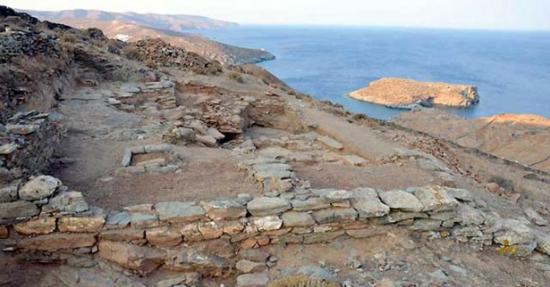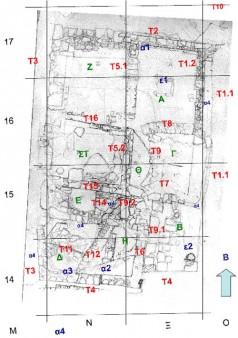The University of Thessaly Project excavation update
Source - http://www.archaiologia.gr/en/

Kythnos, Vryokastro, Building 5 durnig the excavation. Source: University of Thessaly Vryocastro Project website
With settlement indications that go back to the Mesolithic Age (8500-6500 BC) , the Island of Kythnos in the Cyclades is of special archaeological importance. Among the archaeological sites currently under investigation, Vryocastro holds a special position as the Island’s main settlement during Antiquity. Spreading chronologically between the 10th c. BC and the 7th century AD, the ancient city (known itself by the name of Kythnos in antiquity) consisted of a residential area and acropolis with state buildings all surrounded by a fortification wall and two necropoleis, and had access to the sea, where traces of an ancient port still survive.
Fieldwork has taken place in the form of a survey between 1990-1995 and a systematic excavation from 2002 onwards, both in the site’s terrestrial area and (from 2005) in the maritime area -the port and the sea. Research is run by the University of Thessaly in cooperation with the 21st Ephorate of Prehistoric and Classical Antiquities and the Ephorate of Underwater Antiquities. Resently, preliminary results were published regarding the latest finds through the 2013 season, directed by Alexandros Mazarakis Ainian. During 2013 research was focused on fully excavating a monumental building from the Hellenistic period, mentioned in the excavation reports as Building 5, with a view to comprehend its form, function and role for the city.

Kythnos, Vryokastro, Plan of Building 5. Source: University of Thessaly Vryocastro Project website.
With regard to Building 5, recent excavations led to the find that it was developed within two major architectural phases. The earliest dates in the mid-4th century BC, while major repair works seem to have taken place during the 2nd century BC. The point of the final abandonment of the building has not yet been determined but its use cannot span beyond the second-first century BC.